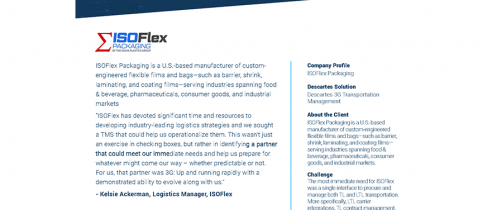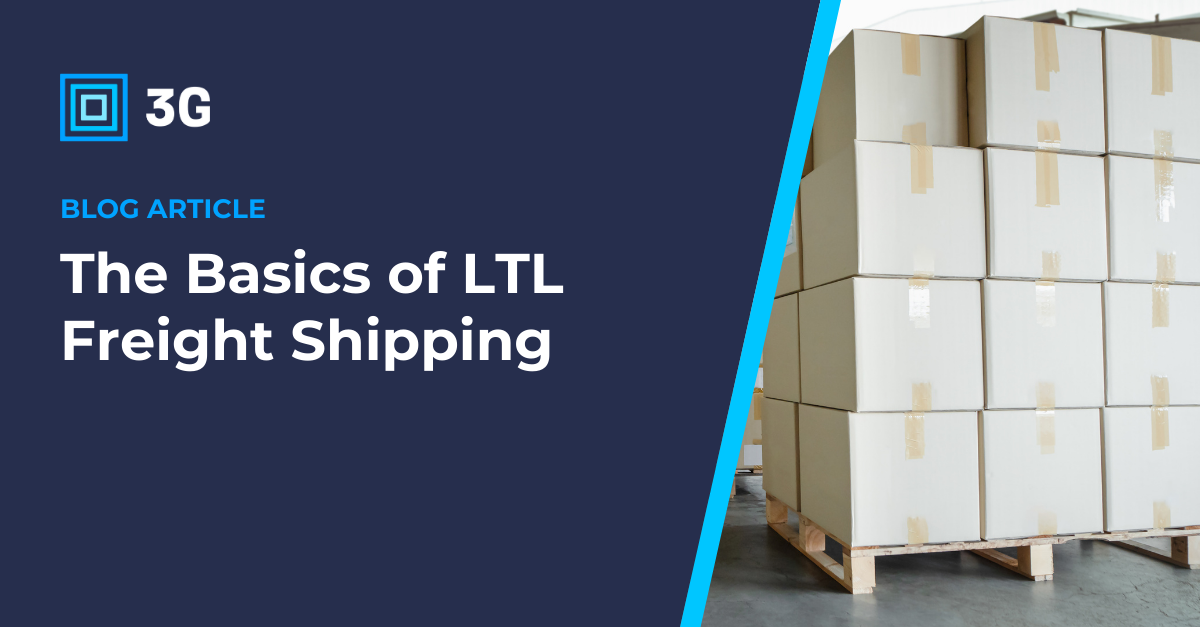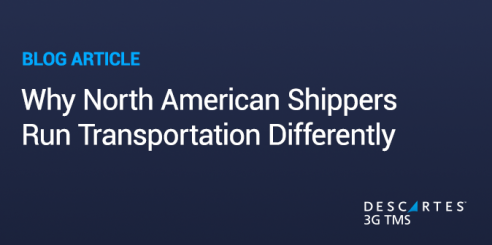If you’ve been relying on parcel shipping to meet your business’s needs, you may have noticed that as volumes grow or shipments get larger, parcel shipping becomes less economical. That’s where Less-Than-Truckload (LTL) freight shipping comes in. LTL freight shipping provides a cost-effective and scalable solution for handling larger shipments without the need for a full truck.
What is LTL Freight Shipping?
LTL freight shipping involves consolidating shipments from multiple businesses into a single truck. This method allows each shipper to pay only for the portion of the truck’s capacity their goods occupy.
- Key Features:
- Ideal for shipments weighing between 150 and 15,000 pounds.
- Typically requires pallets or crates to secure items.
- Utilizes a shared network for pickup, sorting, and delivery.
If you’ve been shipping goods that exceed parcel weight or size limits, or if you’re bundling multiple packages to the same destination, LTL could help you save on costs and streamline your logistics.
Why Consider LTL Freight Shipping?
Transitioning to LTL can bring several benefits:
- Cost Efficiency: By sharing truck space with other shippers, you pay only for the portion you use. This can significantly reduce costs compared to sending multiple parcels for the same shipment.
- Greater Flexibility: LTL shipping accommodates oversized, heavy, or bulk goods that don’t fit within parcel carriers’ limits. It’s ideal for businesses growing out of parcel shipping but not yet ready for FTL.
- Specialized Services: Many LTL carriers offer value-added services like liftgate delivery, temperature-controlled transport, and inside delivery options.
- Environmental Impact: Consolidating shipments into fewer trucks reduces the number of vehicles on the road, lowering fuel consumption and emissions.
Challenges to Be Aware Of
While LTL shipping offers significant benefits, it also comes with its own set of considerations:
- Transit Times: LTL shipments often involve multiple stops, which can lead to longer delivery times compared to parcel shipping.
- Handling Requirements: Increased handling during sorting and delivery can increase the risk of damage. Proper packaging is essential.
- Pricing Complexity: LTL pricing is influenced by freight class, dimensional weight, and accessorial fees. Understanding these factors is key to avoiding unexpected costs.
How to Optimize Your LTL Shipping
To make the most of your LTL shipping operations, consider these best practices:
- Understand Freight Classification: Familiarize yourself with the National Motor Freight Classification (NMFC) system to ensure accurate pricing.
- Optimize Packaging: Use stackable pallets, secure goods with shrink wrap, and ensure proper labeling to prevent damage and delays.
- Leverage Technology:
- Use multi-carrier shipping solutions like 3G Pacejet Shipping to compare carrier rates and book LTL shipments seamlessly.
- Track shipments in real time and automate essential documentation, such as Bills of Lading (BOLs).
- Evaluate Carriers: Partner with reliable LTL carriers from an extensive network to secure competitive rates and ensure consistent service.
How 3G Can Help with Your LTL Shipping Needs
At 3G, we specialize in helping businesses streamline their shipping capabilities:
- 3G Pacejet Shipping: Manage parcel and freight shipments in a single platform with integrations that fit seamlessly into your existing systems.
- Carrier Network: Access a diverse network of LTL carriers offering competitive rates and specialized services tailored to your needs.
- Advanced Freight Management Tools: Optimize every aspect of your shipping operations—from rate shopping and invoicing to tracking and performance analytics.
Whether you’re shipping your first LTL load or looking to scale your freight operations, 3G provides the tools and expertise to make the transition smooth and successful.
LTL freight shipping offers an opportunity to grow, save, and optimize logistics. By understanding its advantages, challenges, and best practices, you can confidently expand your shipping strategy to meet the demands of your business. Ready to take the next step? Let 3G guide you through the process with innovative solutions designed for shippers like you.








